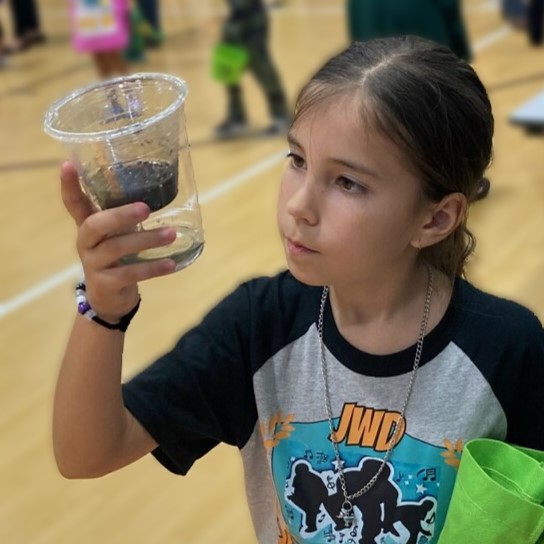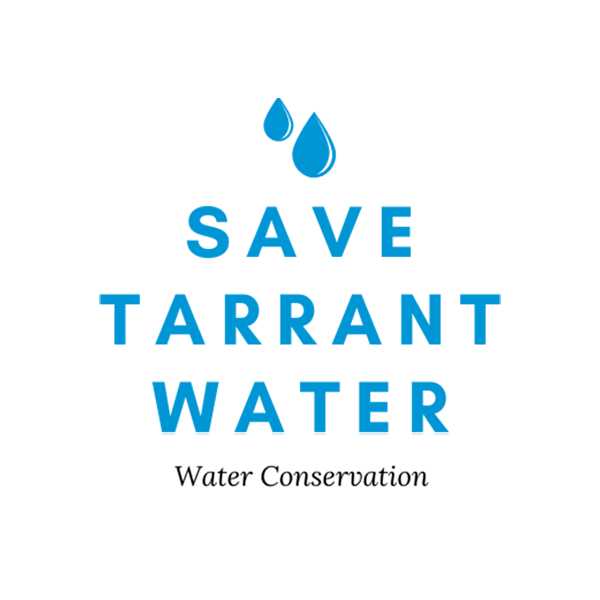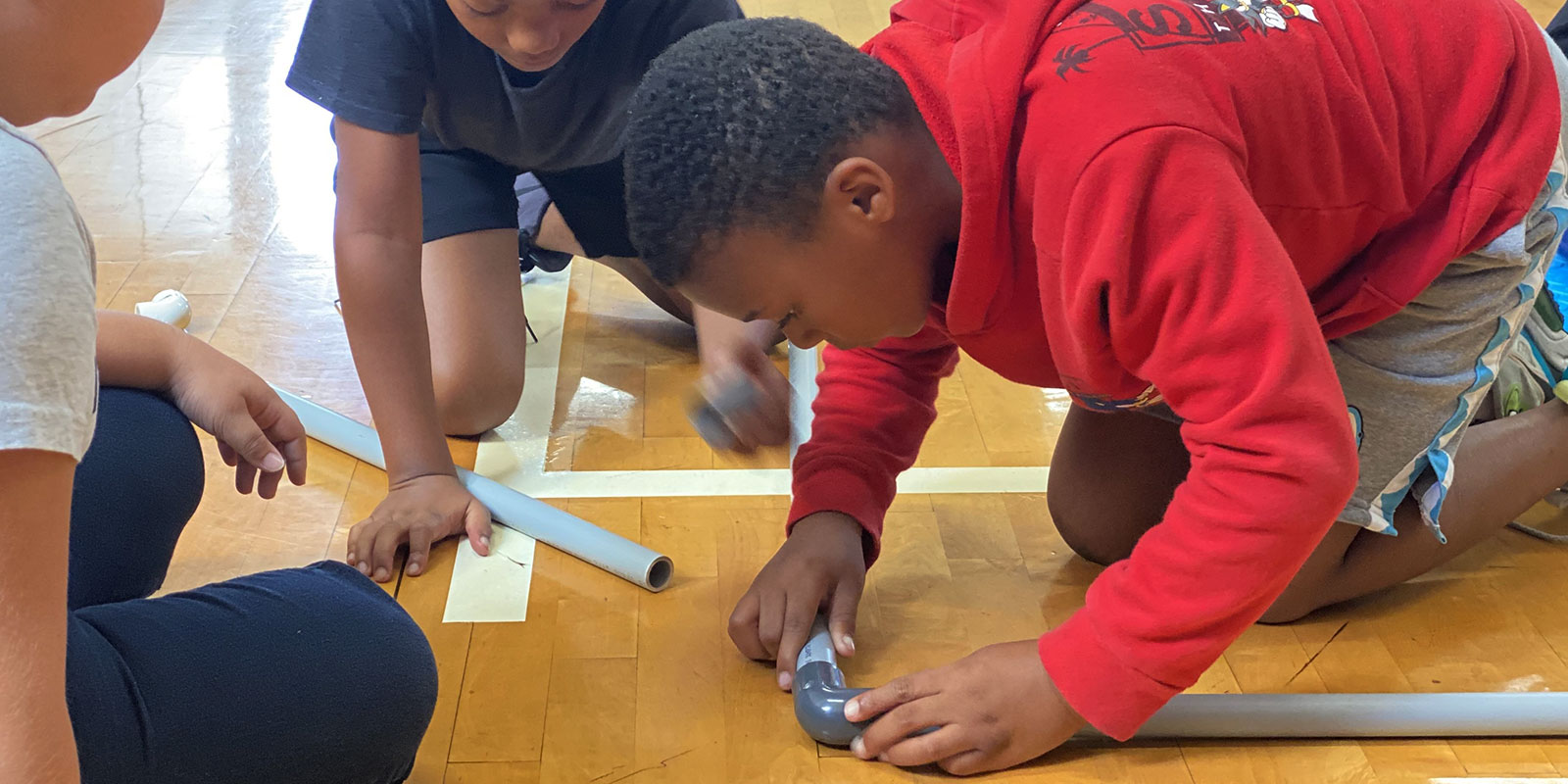
Water Explorers
Our unique Pre-K-5th grade lessons are:
Engaging & High Quality
Taught by Skilled Educators
Free of Charge, on Your School Campus
Our sensory and play-based activities strengthen students' minds and bodies by…
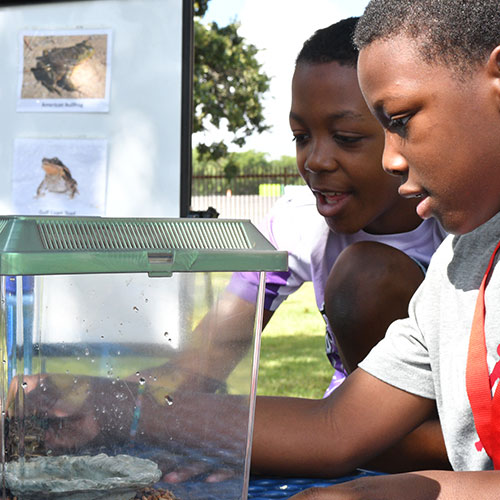
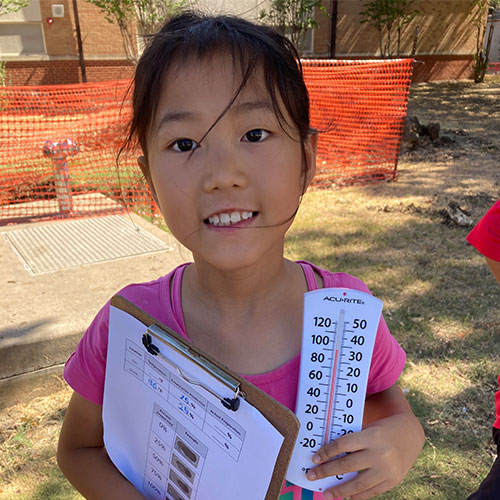
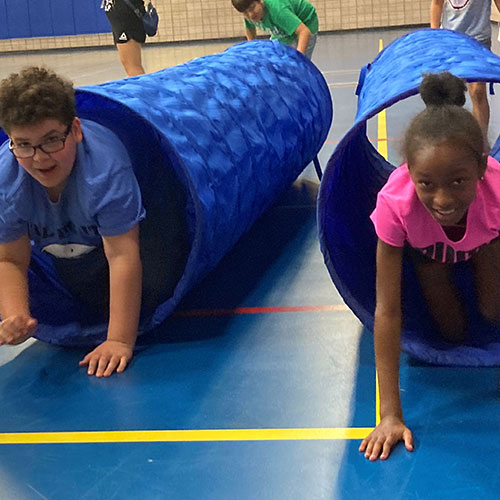
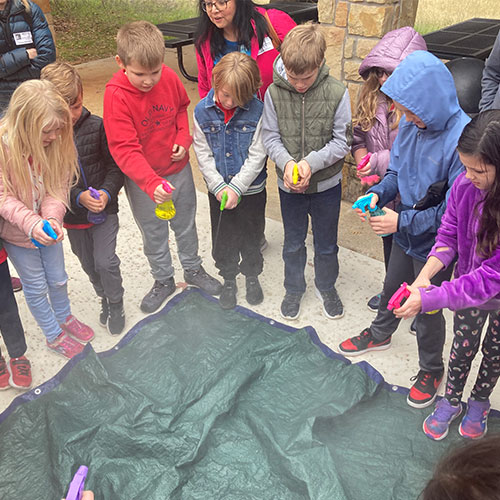
Click to View Our Program Offerings by Grade Level
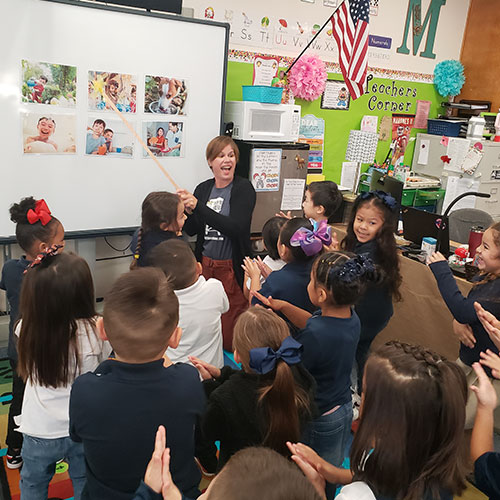
Water Wiggles
Get ready to wiggle and giggle as we turn on the music and act out ways we use clean water every day! Quacky the Duck will come along for the fun and help us recognize how to care for and save water every day. (Indoors)
Key Concepts
- Using water wisely is important and helps us care for our community and the environment. (PK4.VI.C.4)
- We all use water in many ways every day. (PK4.VII.A.3)
Key Skills and Activities
- Suggest movements to tell the story of how we use water. (PK4.VIII.C.1)
- Pantomime ways we use water in time with the rhythm of music. (PK4.VIII.B.1)
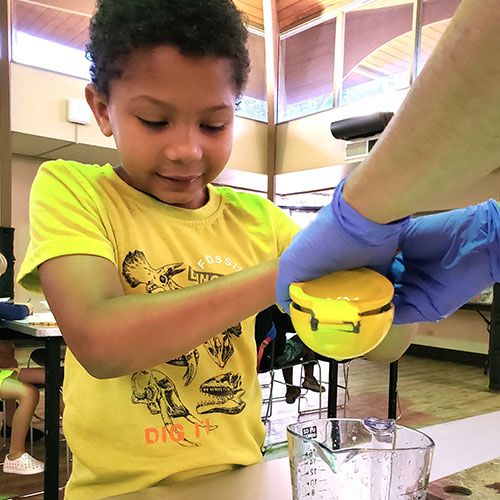
It’s a Waterful World
Why do our bodies need water to be healthy? Do plants and animals need water too? Play a sensory-based guessing game to identify ways our bodies use water, see and touch the water in plants, and learn how we can all care for the precious water we need to live. (Indoors or Outdoors)
Key Concepts
- All living creatures need water to live, just like food and shelter. (PK4.VII.B.1)
- Using water wisely is important and helps us care for our community and the environment. (PK4.VI.C.4)
Key Skills and Activities
- Observe, describe, and discuss the characteristics of humans, plants, and animals. (PK4.VI.B.1)
- Observe, describe, and discuss the relationships of humans, plants, and animals to their environment. (PK4.VI.B.3)
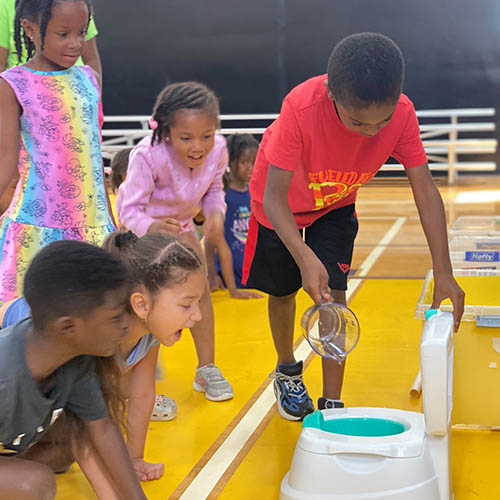
Where’s That Water?
Listen closely to water as it bubbles, swishes, and flows. Can you guess where water is being used in a home? Learn where this precious water comes from, create a display of home water uses, and model ways to use water wisely. (Indoors)
Key Concepts
- We all use water every day in many different ways. (S.K.7.C)
- The water we need to live comes from rain. (S.K.9)
- We need to conserve water because sometimes it doesn’t rain enough. (S.K.8.A)
- We can conserve water in many different ways. (S.K.1.B)
Key Skills and Activities
- Use senses to determine how water is being used in a home. (S.K.4.B)
- Act out ways to conserve water at home and school. (S.K.1.B)
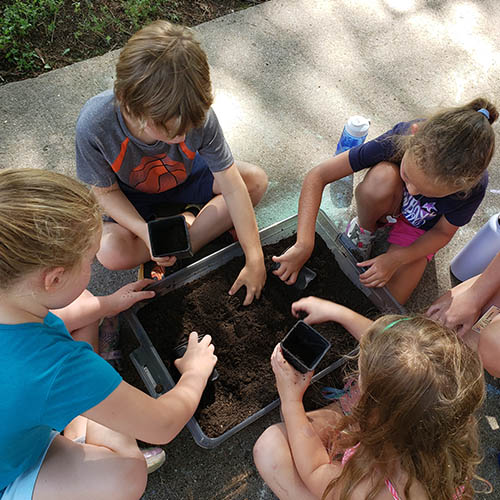
Growing Time
Why do people and plants need water to grow? Examine real plants to see why they need water, listen to an interactive story to learn the purpose of each plant part, act out the life of a Texas wildflower, and plant water-wise flower seeds to beautify your home or school. (Indoors or Outdoors)
Key Concepts
- People, plants, and animals all need water to live. (S.K.9)
- The water we need comes from rain. (S.K.9)
- Plants have different parts that help them survive. (S.K.10)
- We can conserve water in many different ways. (S.K.1.B)
Key Skills and Activities
- Use senses to examine real plants and identify plant parts. (S.K.4.B, S.K.9.B, S.K.10.B, S.K.10.D)
- Act out the life cycle of a plant. (S.K.10.D)
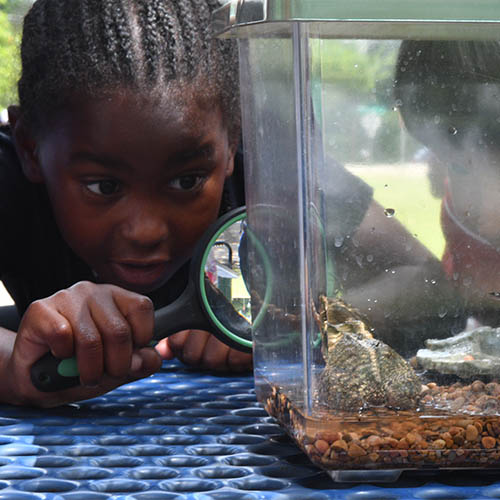
Aquatic Friends
Get up close with local, water-loving animals! Discover the unique features that help them survive, try to match these animals’ athletic skills, and learn how to protect these important wild neighbors. (Indoors – Gym)
Key Concepts
- All people, plants, and animals need water to live.
- Water is valuable and we need to conserve and protect it. (S.1.1.B)
- Frogs have body parts that help them survive. (S.1.10)
- Frogs have a unique life cycle that depends on water. (S.1.10.D)
Key Skills and Activities:
- Identify and describe natural sources of water. (S.1.7.B)
- Observe and ask questions about live frogs. (S.1.2.A)
- Investigate how a frog’s external characteristics relate to where it lives, how it moves, and what it eats. (S.1.10.A)
- Draw a frog habitat with frogs in all life stages. (S.1.10.D)
NOTE: This lesson is not available Dec. – Feb. while the frogs are taking a winter nap.
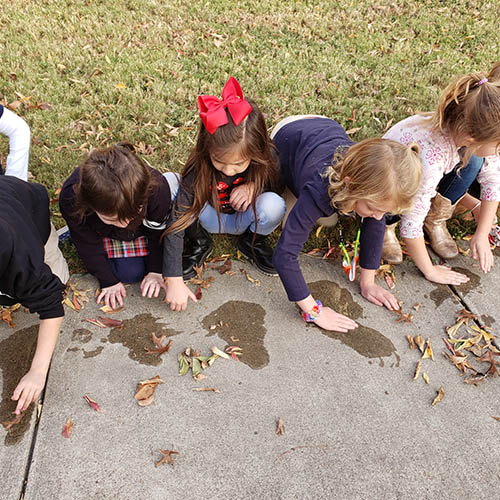
Ride a Raindrop
What happens to rain when it falls on the ground? Play raindrop games to learn about their journey, conduct experiments to explore how water moves on the earth, and pick up litter to keep our waterways clean. (Outdoors)
Key Concepts
- Water is valuable and we need to conserve it and protect it from pollution. (S.1.1.B)
- Water moves over the surface of the earth and collects in natural water bodies. (S.1.7, S.1.7.B)
Key Skills and Activities:
- Investigate how water moves when it falls on the ground and paved areas. (S.1.2.A, S.1.2.B)
- Communicate observations about how water moves on different surfaces. (S.1.2.E)
- Identify and explain how litter pollutes water and propose a solution. (S.1.3.A)
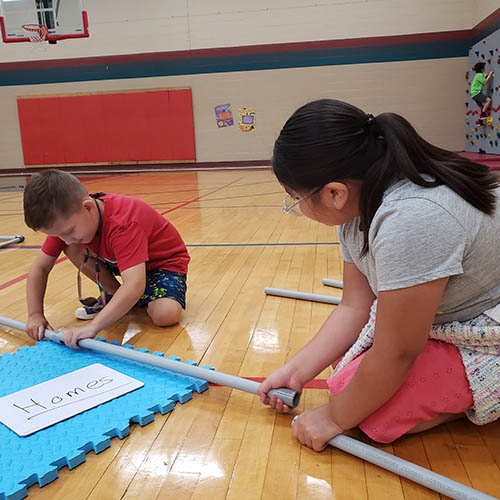
Water Works
Clean water appears to magically come out of our faucets. Where does it come from? Become a water engineer and construct a large model of our water supply system to provide the clean water our community needs! (Indoors – Gym or Large Room)
Key Concepts:
- We all need water to live, and we use it in many ways. (SS.2.7.C)
- Water is valuable and we need to conserve and protect it. (S.2.1.B)
- People build lakes to collect rainwater and systems of pipes to move water where we need it. (S.2.7.C, SS.2.8.A)
- Many people work together to bring us clean water every day. (SS.2.11.B)
Key Skills and Activities
- Work in teams to construct a model of our water supply system. (SS.2.8.A)
- Assess the water supply model and make repairs, just like workers in real life. (SS.2.11.B)
- Identify and discuss ways to conserve water. (S.2.1.B)
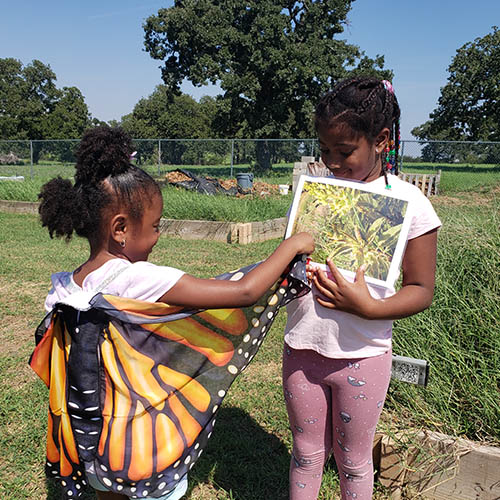
Monarch Buddies
Monarch butterflies face challenges and their populations have greatly decreased. People use lots of water and when it doesn’t rain, we worry if we will have enough. Is there a way to help Monarchs and save water at the same time? Discover the answer by learning all about Monarchs – their features, habitat, and life cycle – and then take flight as a Monarch to collect nectar and search for milkweed plants! (Outdoors)
Key Concepts:
- All people, plants, and animals need water to live. (S.2.9.A, SS.2.7.C)
- Water is valuable and we need to conserve and protect it. (S.2.1.B)
- Monarch butterflies have unique features that help them survive. (S.2.10)
- Monarchs depend on milkweed plants to raise their young. (S.2.9.C, S.2.10.C)
- Native Texas plants provide food for Monarchs and can survive with little water. (S.2.9.C)
Key Skills and Activities
- Arrange pictures in the correct order of the Monarch life cycle (S.2. 10.C)
- Pretend to be Monarchs and search for nectar plants for food and for milkweed plants to lay eggs. (S.2.9.C)
- Identify and discuss ways to conserve water. (S.2.1.B)
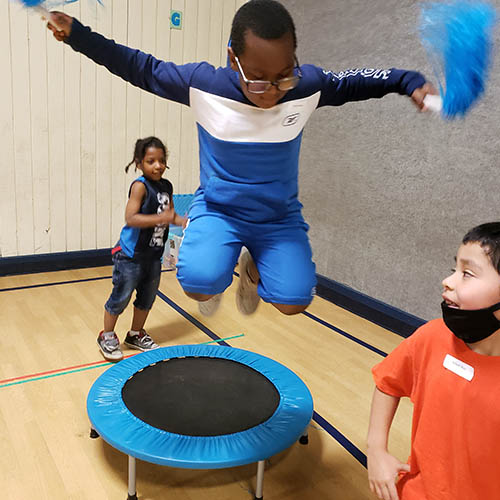
Water Ninjas
Take an imaginary journey as a water droplet traveling from a cloud all the way to your faucet at home. Use your new knowledge to design and test a high-energy obstacle course for water drops that mirrors part of the urban water cycle! (Indoors – Gym)
Key Concepts
- Water is valuable because we need it to survive and use it in many ways. (S.3.7.C)
- In North Texas, we build lakes to supply drinking water, water treatment plants to clean the water, and pipes to move it to places we need it. (SS.3.4.B)
- Conserving water makes our water supplies last longer and helps ensure we have enough water for all our needs. (S.3.7.C, SS.3.4.D)
Key Skills and Activities
- Design and complete creative movements for an obstacle course that models the urban water cycle. (S.3.3.B)
- Identify ways to conserve water at home and school. (S.3.1.B)
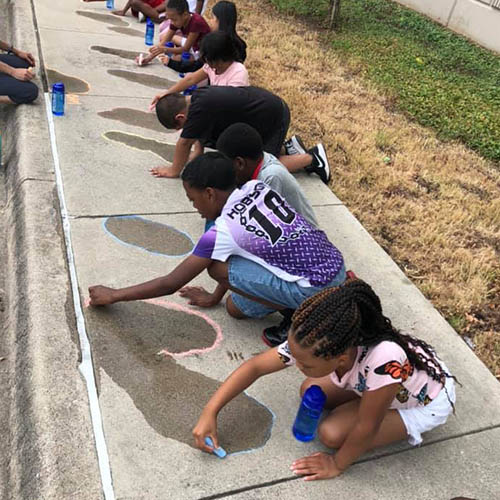
Keeping It Cool
How do people, plants, and animals stay cool when it’s hot? Get spritzed to feel water’s cooling power first-hand, conduct your own evaporation experiment, illustrate a local water-cycle, and ponder clues to reveal water-saving strategies. (Outdoors)
Key Concepts
- Energy from the sun heats liquid water and causes it to evaporate. (S.3.5.C)
- People, plants, and animals need more water when temperatures are high. (S.3.9.A)
- Our drinking water comes from lakes, which lose substantial water to evaporation when temperatures are high. (S.3.9.A)
- We can conserve water to help provide enough water for everyone. (SS.3.4.D)
Key Skills and Activities
- Predict, observe, and record changes in water caused by heating. (S.3.5.C)
- Observe, record, and compare air temperature in different locations at the same (S.3.8.A)
- Collect and record observed data from an evaporation experiment. (S.3.2.B)
- Analyze data and explain the results of the experiment. (S.3.2.D, S.3.2.F)
- Use clues to identify ways to conserve water at home. (S.3.7.C)
Note: This lesson is available from March through November.
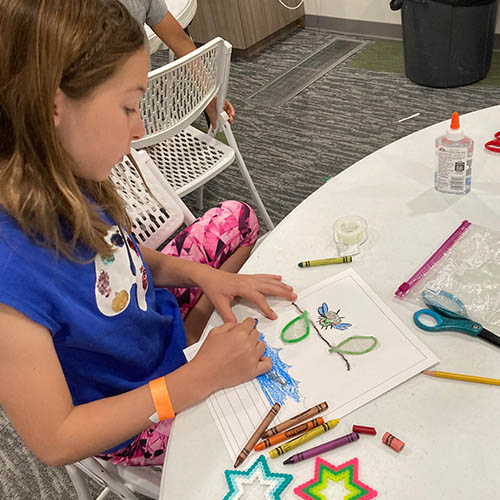
Create a Critter
A wild world of aquatic insects can be found in our waterways! Take a close-up look at their life cycles and adaptations, learn how they are affected by human activities, and create an original macroinvertebrate using your new knowledge. (Indoors)
Key Concepts
- Clean water is essential for all life and should be conserved and protected. (S.4.7.C)
- Aquatic insects have structures and functions that help them survive in their environment. (S.4.10.A)
- Humans cause changes in ecosystems that affect other species. (SS.4.9.A, SS.4.9.C)
Key Skills and Activities
- Observe and compare structures and life cycles of aquatic macroinvertebrates. (S.4.10.A, S.4.10.C)
- Discuss how macroinvertebrates interact with their environment. (S.4.9)
- Describe changes in aquatic ecosystems caused by humans. (SS.4.9.A)
- Create an imaginary macroinvertebrate with unique structures and functions. (S.4.10.A)
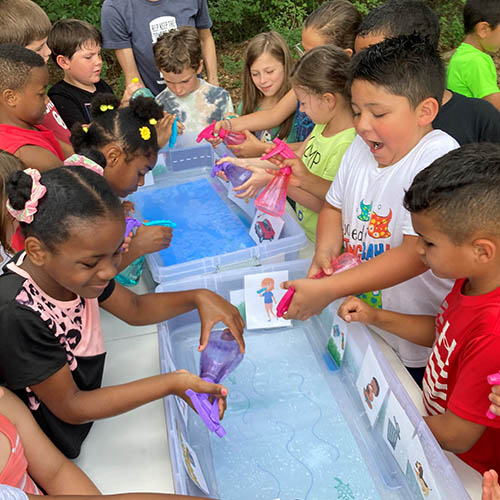
Water Rangers
Where does our water come from and how can we save and protect it? Make it rain on a model earth, explore outside to discover how rainwater travels, create a busy cityscape to learn how water becomes polluted, and take action to protect our local waterways. (Outdoors)
Key Concepts
- Water is valuable because we need it to survive, and we use it in many ways.
- Our drinking water comes from rain, travels along the surface of the earth in streams and rivers, and collects in lakes. (S.4.8.B)
- Human activities can pollute water as it travels along the surface of the earth. (SS.4.9.C)
- We can all help to conserve and protect water. (S.4.1.B)
Key Skills and Activities
- Investigate water drainage patterns on your school campus by looking for evidence of erosion and deposition caused by water. (S.4.1, S.4.7.B)
- Create two different types of watershed models to understand how water moves on the surface of the earth and can become polluted. (S.4.3.B)
- Identify and discuss ways to conserve and protect water. (S.4.1.B)
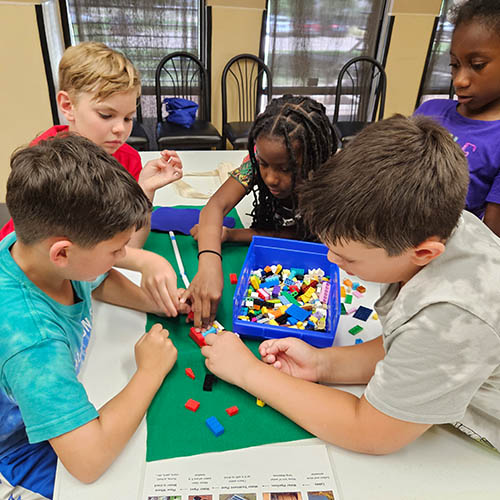
Engineering H2O
Supplying clean, reliable drinking water to our communities takes talent, technology, and teamwork. Work together to create models of our water supply system, predict and model changes from population growth and drought, and brainstorm strategies to provide enough water to meet our needs. (Indoors)
Key Concepts
- Clean, reliable sources of water are essential for communities to grow. (SS.5.8.B)
- People have modified the natural environment by building systems to collect, store, clean, and transport water to meet our needs. (SS.5.9.A)
- Weather varies but droughts occur regularly in Texas’ semi-arid climate and affect our water supply. (S.5.8.A)
Key Skills and Activities
- Identify the consequences of building reservoirs to supply drinking water. (S.5.9.C, SS.5.9.B)
- Construct a model of our local water supply system. (S.5.3.B, SS.5.9.A)
- Identify and discuss strategies to meet local water demand. (S.5.1.B)
